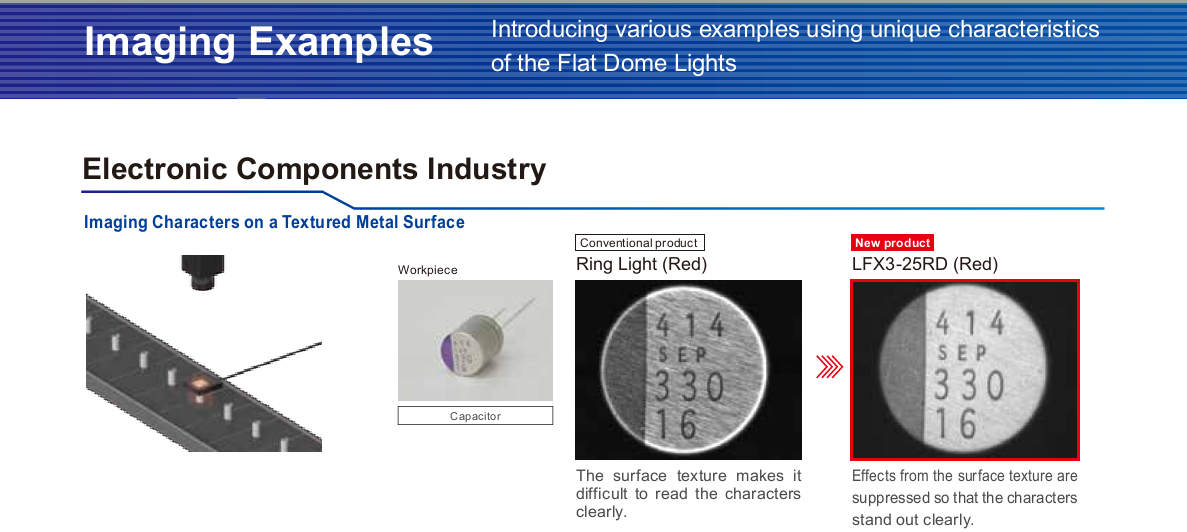
CCS Flat Dome Lights can be powered and controlled using one of the PD2 or PD3 Series Digital Controllers. Both series of controllers have a selectable LED input voltage and LED power consumption, allowing them to be configured for use with a variety of lights. The PD2 Digital Controllers offer a simple plug-and-play solution with coarse and fine intensity control knobs, and a Dsub terminal for external control. The PD3 Digital Controller provides the same basic control as the PD2 Series but features a digital display, intensity control using Ethernet, TCP/IP and UDP/IP Ethernet communications for external control, and external trigger inputs to strobe lights.
Note: The total power consumption of the connected lights must be 28 W or less.
CCS Flat Dome Lights are ideal for achieving illumination similar to Coaxial or Dome Lights in a lighter, more compact unit. While standard dome lights are good for creating a diffuse lighting environment that minimizes specular reflection, their mechanical size and imaging aperture through a small hole on top limit their use in compact applications. These flat dome lights provide the same diffuse illumination environments as a standard dome light but in a 10mm thick, flat housing with a large imaging area, greatly increasing the options for working distance, depth of focus, and field of view. CCS Flat Dome Lights can also be used at long working distances to recreate the illumination environment of a coaxial light, which is used to reduce shadowing and has minimal glare. This flexibility makes these flat dome lights suitable for a wide range of industrial and imaging applications, particularly when imaging textured, shiny, or uneven surfaces.



or view regional numbers
QUOTE TOOL
enter stock numbers to begin
Copyright 2023, Edmund Optics India Private Limited, #267, Greystone Building, Second Floor, 6th Cross Rd, Binnamangala, Stage 1, Indiranagar, Bengaluru, Karnataka, India 560038
California Consumer Privacy Acts (CCPA): Do Not Sell or Share My Personal Information
California Transparency in Supply Chains Act
The FUTURE Depends On Optics®